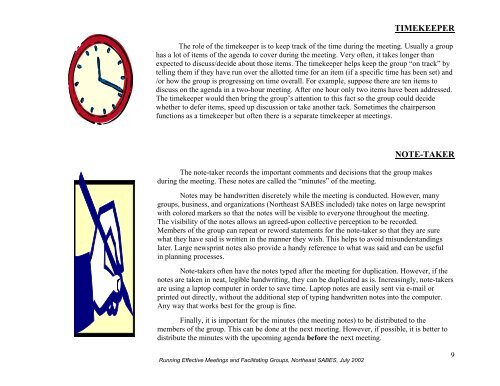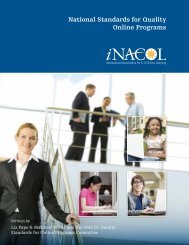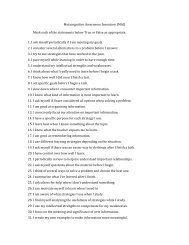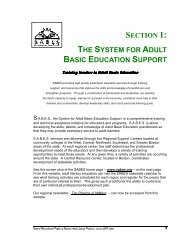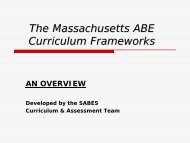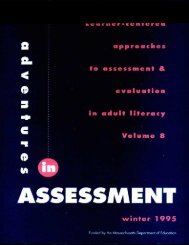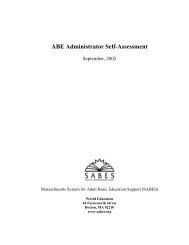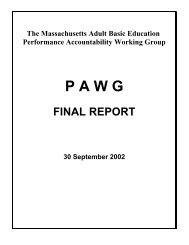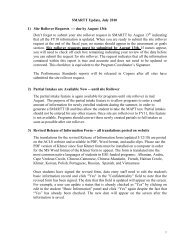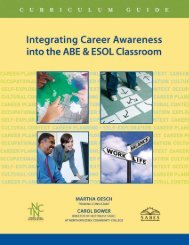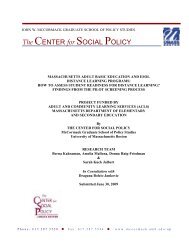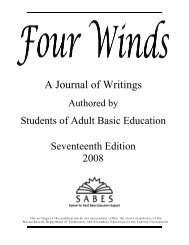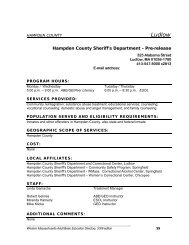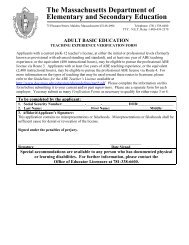Running Effective Meetings and Facilitating Groups - SABES
Running Effective Meetings and Facilitating Groups - SABES
Running Effective Meetings and Facilitating Groups - SABES
Create successful ePaper yourself
Turn your PDF publications into a flip-book with our unique Google optimized e-Paper software.
TIMEKEEPER<br />
The role of the timekeeper is to keep track of the time during the meeting. Usually a group<br />
has a lot of items of the agenda to cover during the meeting. Very often, it takes longer than<br />
expected to discuss/decide about those items. The timekeeper helps keep the group “on track” by<br />
telling them if they have run over the allotted time for an item (if a specific time has been set) <strong>and</strong><br />
/or how the group is progressing on time overall. For example, suppose there are ten items to<br />
discuss on the agenda in a two-hour meeting. After one hour only two items have been addressed.<br />
The timekeeper would then bring the group’s attention to this fact so the group could decide<br />
whether to defer items, speed up discussion or take another tack. Sometimes the chairperson<br />
functions as a timekeeper but often there is a separate timekeeper at meetings.<br />
NOTE-TAKER<br />
The note-taker records the important comments <strong>and</strong> decisions that the group makes<br />
during the meeting. These notes are called the “minutes” of the meeting.<br />
Notes may be h<strong>and</strong>written discretely while the meeting is conducted. However, many<br />
groups, business, <strong>and</strong> organizations (Northeast <strong>SABES</strong> included) take notes on large newsprint<br />
with colored markers so that the notes will be visible to everyone throughout the meeting.<br />
The visibility of the notes allows an agreed-upon collective perception to be recorded.<br />
Members of the group can repeat or reword statements for the note-taker so that they are sure<br />
what they have said is written in the manner they wish. This helps to avoid misunderst<strong>and</strong>ings<br />
later. Large newsprint notes also provide a h<strong>and</strong>y reference to what was said <strong>and</strong> can be useful<br />
in planning processes.<br />
Note-takers often have the notes typed after the meeting for duplication. However, if the<br />
notes are taken in neat, legible h<strong>and</strong>writing, they can be duplicated as is. Increasingly, note-takers<br />
are using a laptop computer in order to save time. Laptop notes are easily sent via e-mail or<br />
printed out directly, without the additional step of typing h<strong>and</strong>written notes into the computer.<br />
Any way that works best for the group is fine.<br />
Finally, it is important for the minutes (the meeting notes) to be distributed to the<br />
members of the group. This can be done at the next meeting. However, if possible, it is better to<br />
distribute the minutes with the upcoming agenda before the next meeting.<br />
<strong>Running</strong> <strong>Effective</strong> <strong>Meetings</strong> <strong>and</strong> <strong>Facilitating</strong> <strong>Groups</strong>, Northeast <strong>SABES</strong>, July 2002<br />
9


